MO Tested: AGV Pista GP R Review

AGV's track-focused tip of the spear
The AGV Pista GP-R is about as premium as it gets when it comes to motorcycle helmets and its design, materials, finish, and price all reflect that. The full carbon fiber helmet’s retail pricing begins at $1,400 and continues up to $1,600 for race replicas making it one of the most expensive helmets on the market, second perhaps only to Arai’s ultra-exclusive $4,000 Corsair X RC. Is it worth it? Read on and decide for yourself.
I’ve spent many miles on track and on the road with the Pista GP R and have found it to be an excellent track helmet, but before we get into my impressions, let’s take a look at what makes the AGV Pista GP R so speciale.
Why is the AGV Pista GP R so expensive?
First off, the Pista GP R shell is constructed entirely of carbon fiber for maximum weight savings. More importantly, each of its four available shell sizes receives its own dedicated EPS liner for supreme fit and comfort. There are seven sizes, from XS to XXL, including MS (medium-small) and ML (medium-large), the former getting its own dedicated shell while the latter shares its shell with the standard L helmet. This allows AGV to keep the weight as low as possible for each different size.
The Pista GP R comes equipped with a long, dual-plane rear spoiler to help reduce turbulence behind the rider’s head. Computational Fluid Dynamic (CFD) simulation software was used in conjunction with wind-tunnel testing for aerodynamic purposes, not only to slice the cleanest hole through the air – AGV claims a 4% aero improvement over the Pista GP – but also to help keep the rider’s head stable even while turning their head at high speed. In the event of a crash, the spoiler is designed to snap off easily. Interestingly enough, the latest Pista, the GP RR now uses a similar design to the GP R’s predecessor, the Pista GP.
As has now become common practice with most racing lids, the cheekpads can be easily pulled away by emergency personnel to aid in helmet removal. As far as fit and comfort go, the Shalimar liner is both comfortable to the touch and wicks away sweat. The patented liner system features two “rabbit ears” that essentially wrap the crown of the head and can be adjusted a few degrees from side to side to better suit the rider’s preferences. The entire liner is also easily removable for washing.
AGV claims a 190º horizontal, and 85º vertical field of view, which not only gives the rider excellent peripheral vision all the time, but is particularly useful whilst fully tucked in behind the windscreen of a supersport bike. The new Pista’s visor is a robust 5mm thick and features a double anti-fog coating, as well as being prepped to use the Pinlock 120 insert which is included in the package. Unlike previous Pinlock inserts that only cover, say, 85% of the visor, the Pinlock 120 on the Pista GP R covers 100% of the visor’s viewable area. As for the 120, this stands for the minimum number of seconds one can breathe inside the helmet at a standstill before the insert starts to fog. The previous iteration was a Pinlock 70. There are also posts on the exterior of the visor for tear-offs which also come with the helmet.
Riding Impressions
The standout feature of the helmet when donning it is its incredible light weight. The Pista GP R is, by a fair margin, the lightest race lid that I’ve had the opportunity to use. My medium-small Pista GP R weighs in at 3 lbs 4.4 oz (1486 g). For comparison, I weighed the other two race/sport helmets on my shelf: the medium Shoei X-14 weighs 3 lbs 8.3 oz, and the medium Arai Corsair X weighs 3 lbs 10.9 oz.
The next thing you’ll notice, if you’ve fitted the helmet right, is there isn’t a whole lot of extra room inside. I’m fortunate that the AGV Pistas and Corsas have always worked well for me in terms of fit and I like using them, both on the track and on the street. There are no cut-outs for comm systems, your nose very well may be touching the breath deflector or near the chin bar itself, and you should have “chipmunk” cheeks. This helmet is not built for street riding or touring; it is positioned at the pointy end of track-focused equipment. Think of it as the Panigale of helmets.
At speed, the aerodynamics coupled with the helmet’s weight provide fantastic stability at speed. It really is that good. In addition, during head checks at high speed, popping out from behind the windscreen, the helmet doesn’t catch the wind like others do when your head is turned. It may sound silly, but it still amazes me how aerodynamic this helmet can feel even with your head turned sideways.
Ventilation is also substantial as the open vents do a great job of ramming air into your helmet before extruding it out the other end. All of that ventilation combined with the acoustic characteristics of carbon fiber results in a loud helmet. Yes, AGV is aware – the helmet comes with ear plugs. Again, race-focused, not touring-focused. You won’t want to use the Pista GP R without earplugs.
The visor locking system has been revamped from the previous model. The button on the front is now inset slightly for less risk of being accidentally opened during a crash. There are no detents in the visor, so your options are fully open, halfway locked (to the first click), and fully closed and latched. Because of this, there have been plenty of reports over the years of folks going from zero to whoa speeds before closing their visors which can cause the visor to slam closed with ferocity. Over time, if this happens a lot, it can break the latching mechanism, causing your $1600 helmet to be relegated to the shelf as the latch cannot be replaced.
The hydration system that comes with the helmet is easy to remove or install with a single plastic screw. When installed, the bite valve will likely be in your mouth or annoyingly close, so you’ll only want to use it when you’re sure you’ll really need it. The hose routes behind the cheek pad and around the neck roll where it would then connect to a compatible hydration bladder.
The Pista GP R is an excellent track day helmet due to its light weight and ventilation. I’ve also used it on the street a fair amount, like during our sport-touring ride to Laguna Seca, the subsequent track day, and the long hot ride home afterward. To talk to the guys through our Cardo units, I used headphones plugged into the comm system, as I couldn’t comfortably fit speakers into the helmet. This worked, but wasn’t a perfect solution as I had wires hanging off of me to tuck in every time we stopped for photo/video. Communicators aside, with a good set of earplugs, and in good weather, I wouldn’t hesitate using the Pista GP R more frequently on the street.
While it’s perhaps not as laser-focused on doing one thing, like supersport motorcycles are, the Pista GP R should be looked at in the same way. It is a purpose-built piece of track/race equipment developed in coordination with Valentino Rossi himself. AGV takes pride in delivering the message that the Pista line of helmets has always been the MotoGP helmet, meaning the folks racing at the highest levels in the world are using the same lid that you can buy for a few pretty pennies.
About the time I received the AGV Pista GP R, it was announced that an RR version would be hitting the market soon. At the time this review was published, the Pista GP R has been superseded by the Pista GP RR. The RR is an FIM homologated version of the previous helmet which means its carbon fiber shell is thicker to meet FIM requirements. Some subtle styling changes have also been applied, but the shell thickness is the biggest change to the RR model. We’ve been told a MS helmet may have gained 100 g, but haven’t been able to weigh an RR model to verify this claim.
AGV Pista GP R Specifications | |
|---|---|
| Colors | Various solids, graphics, and race replicas |
| Sizes | XS, S, MS, ML, L, XL, XXL |
| Weight (MS measured) | 3 lbs 4.4 oz (1486 g) |
| Safety Standards | DOT, ECE |
AGV Pista GP R | |
| + ProsThe lightest of weightExcellent ventillationRace fit, fit for racing | – ConsYou’ll want to wear earplugsSome might say it’s a bit priceyThe fit doesn’t seem to work for everybody |
FAQ
Where are AGV Pista helmets made?
The Pista GP R is made in Italy. The design and research and development of the helmets is carried out at the Dainese Group’s HQ in Molvena, while the manufacture of the Pista takes place at AGV’s facility in Campdoro.
How does the hydration system work in the AGV Pista?
The bite valve is secured to the inside of the chinbar by a plastic screw. The hose then routes behind the cheek pad and out and around the back of the neck roll where it can be attached to a compatible hydration system (usually stored in the aerodynamic hump of a track suit).
What’s the difference between the AGV Pista GP-R and GP-RR?
The Pista GP RR was revamped to meet new FIM homologation requirements. This revamp consisted of making the 100% carbon fiber shell thicker, which, yes, in turn makes the helmet ever so slightly heavier, we’ve read 100 g for a MS, or about 3.5 ounces. Styling elements have also been updated, but the major story with the GP RR is the shell thickness.
Additional Resources
Best Motorcycle Racing Helmets
AGV Helmets: Everything You Need To Know
We are committed to finding, researching, and recommending the best products. We earn commissions from purchases you make using the retail links in our product reviews. Learn more about how this works.
Become a Motorcycle.com insider. Get the latest motorcycle news first by subscribing to our newsletter here.

Ryan’s time in the motorcycle industry has revolved around sales and marketing prior to landing a gig at Motorcycle.com. An avid motorcyclist, interested in all shapes, sizes, and colors of motorized two-wheeled vehicles, Ryan brings a young, passionate enthusiasm to the digital pages of MO.
More by Ryan Adams



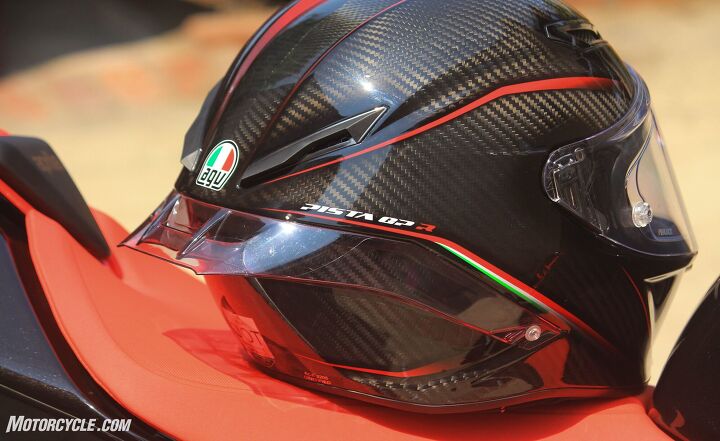
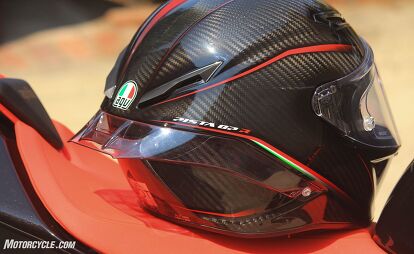


































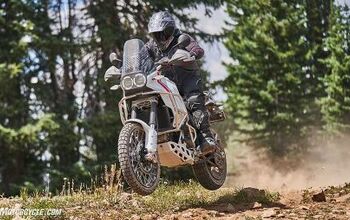

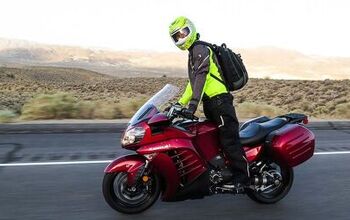


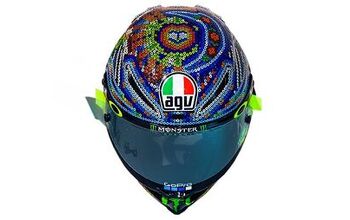
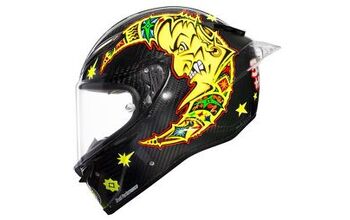
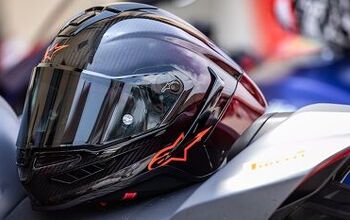










Comments
Join the conversation
I dig their carbon modular.
I've had one of these helmets for 5 years now but there are some problems with them.
The rectangular tips of BOTH visor pivot pins have broken off meaning that a visor cannot be secured! Riding without a visor is dangerous given the crap in our air today as well as bits & pieces thrown up by other vehicles. 😢 My broken pivot pins replacement is another huge problem! 😥 They are expensive & have to be ordered from Italy. 🇮🇹 That of course means waiting for weeks for them to arrive. Given the poor quality of these parts & the expense & hassle of buying replacement ones... not to mention the very high price of these helmets... such replacement parts should be FREE & sent FREE to the owners of these helmets.
The other problem that I have with this helmet is the visor ALWAYS fogs up when riding very slow in traffic & stopped at the traffic lights 🚥 😢 I've watched Valentino's visor very closely when he racing & I have never seen his visor fog up!! 😲 I don't know how that possible with this helmet because I'm certain that if I was beside him on the starting grid I would not be able to see a thing out of my badly fogged up visor!! 😥
Any ideas anyone?? 🤔 AGV?? 🤔